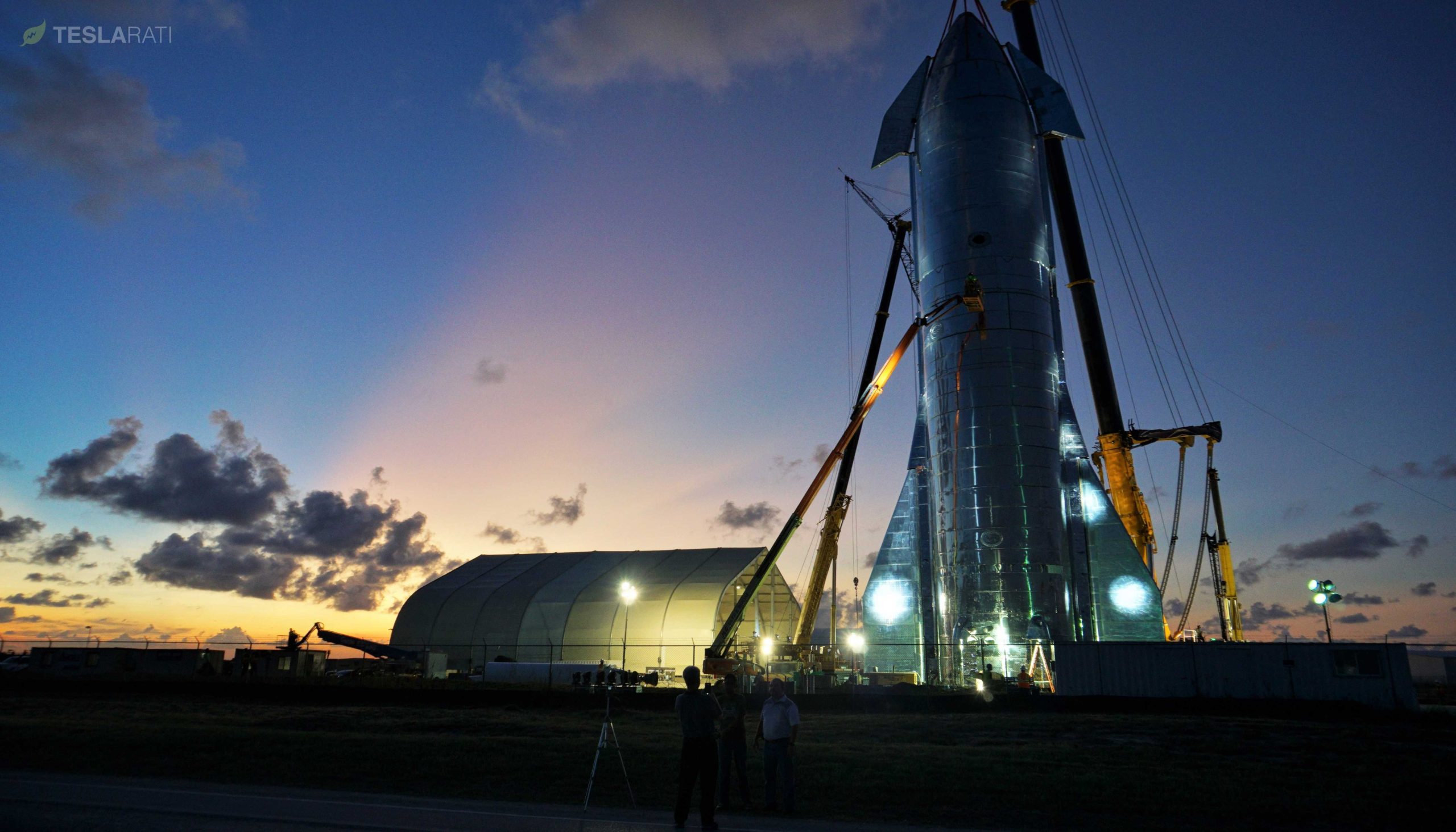
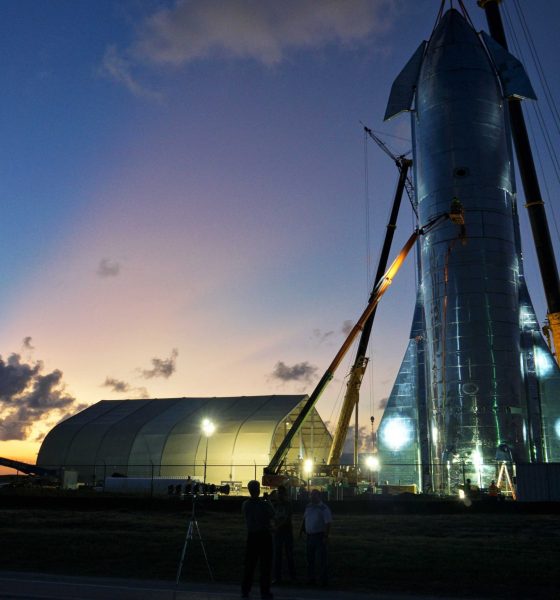
News
SpaceX says Starship Mk1 will test ‘skydiver’ landing before the end of 2019
A senior SpaceX director says that the Starship Mk1 prototype could lift off for the first time before the end of 2019, a flight debut SpaceX hopes will successfully demonstrate the next-generation spacecraft’s exotic ‘skydiver’ landing method.
SpaceX is in the late stages of building the first full-scale Starship prototypes, known as Mk1 (situated in Boca Chica, Texas) and Mk2 (Cocoa, Florida). The Texas-based Mk1 prototype is by far the furthest along and featured prominently at CEO Elon Musk’s Starship update presentation on September 28th, having been stacked to its final height of ~50m (165 ft) for the first time just days prior.
It’s clear now that more than a little showmanship was involved in the work that lead up to Starship Mk1’s unveiling. Within a week or two of the event, SpaceX technicians had separated Starship’s nose and tail sections, removed all three Raptor engines, and uninstalled the ship’s wings and canards, among other things.

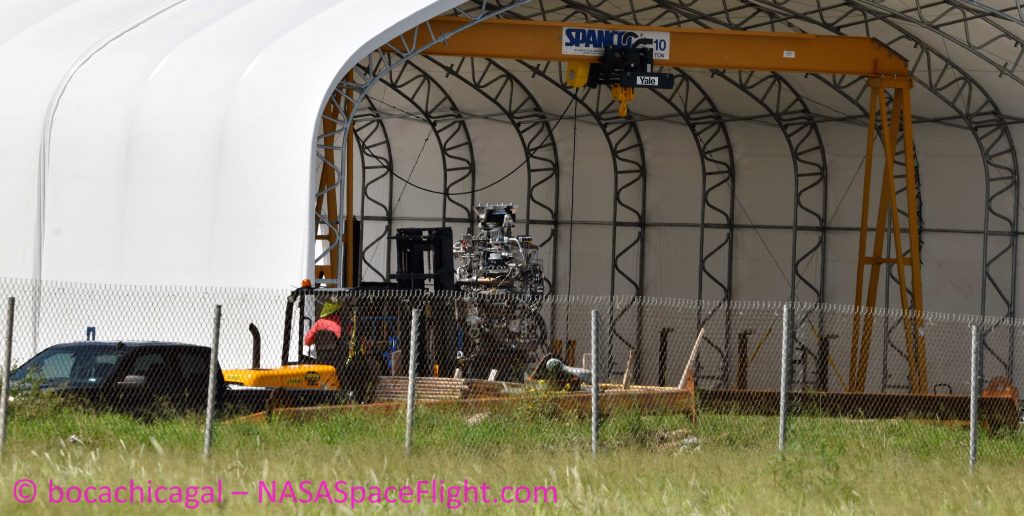
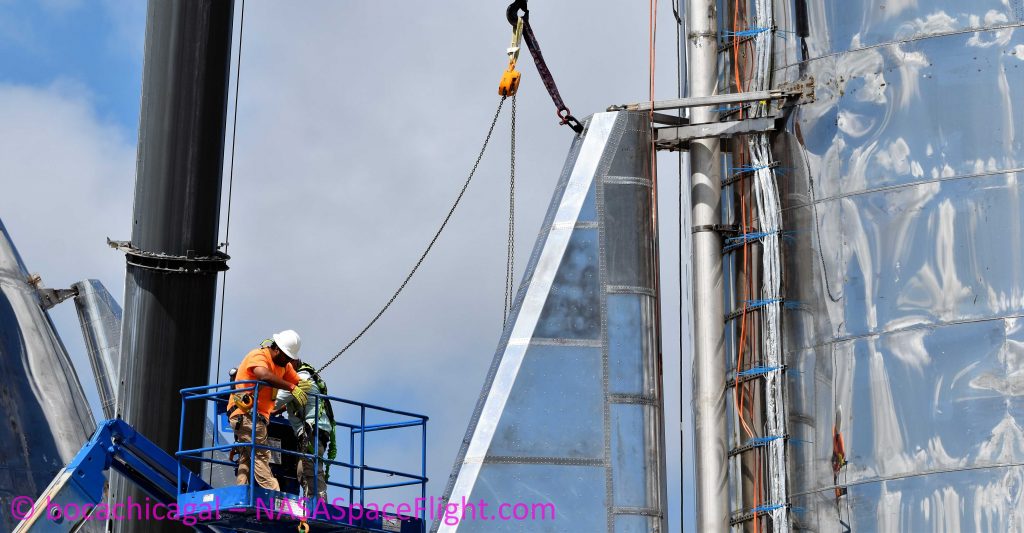
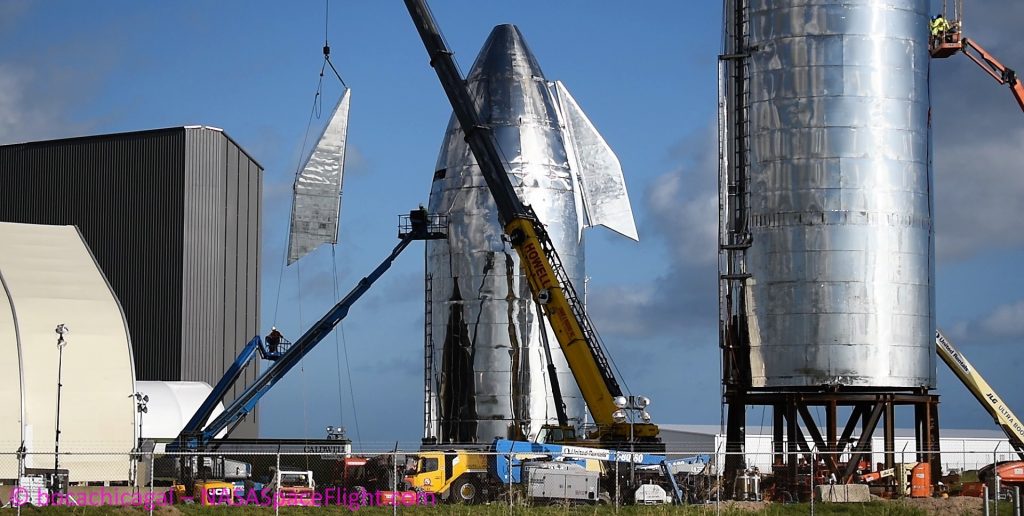
Aside from the nose and tail section demate and removal of flaps, canards, and Raptors, the aero covers that were briefly attached to Starship’s exterior (raceways, canards, flaps, legs) were also removed. One raceway cover may or may not have been a casualty of high winds but all of the above hardware was carefully stored on the ground surrounding Starship Mk1 and is clearly meant to be installed more permanently in the coming weeks.
Nevertheless, Starship Mk1 obviously has a decent ways to go before it can be seriously considered flight-ready. On a positive note, aside from several days spent undressing Starship, SpaceX’s South Texas team (and others traveling from Florida and California) have been working 24/7 in the weeks since Musk’s presentation.
The last two weeks of Starship Mk1 activity have centered around installing the numerous crucial bits and pieces the rocket will need to function. This has included thousands of feet of power cables, avionics wiring, and propellant feed and transfer pipes; industrial-scale power controllers and flight computers, and much more.
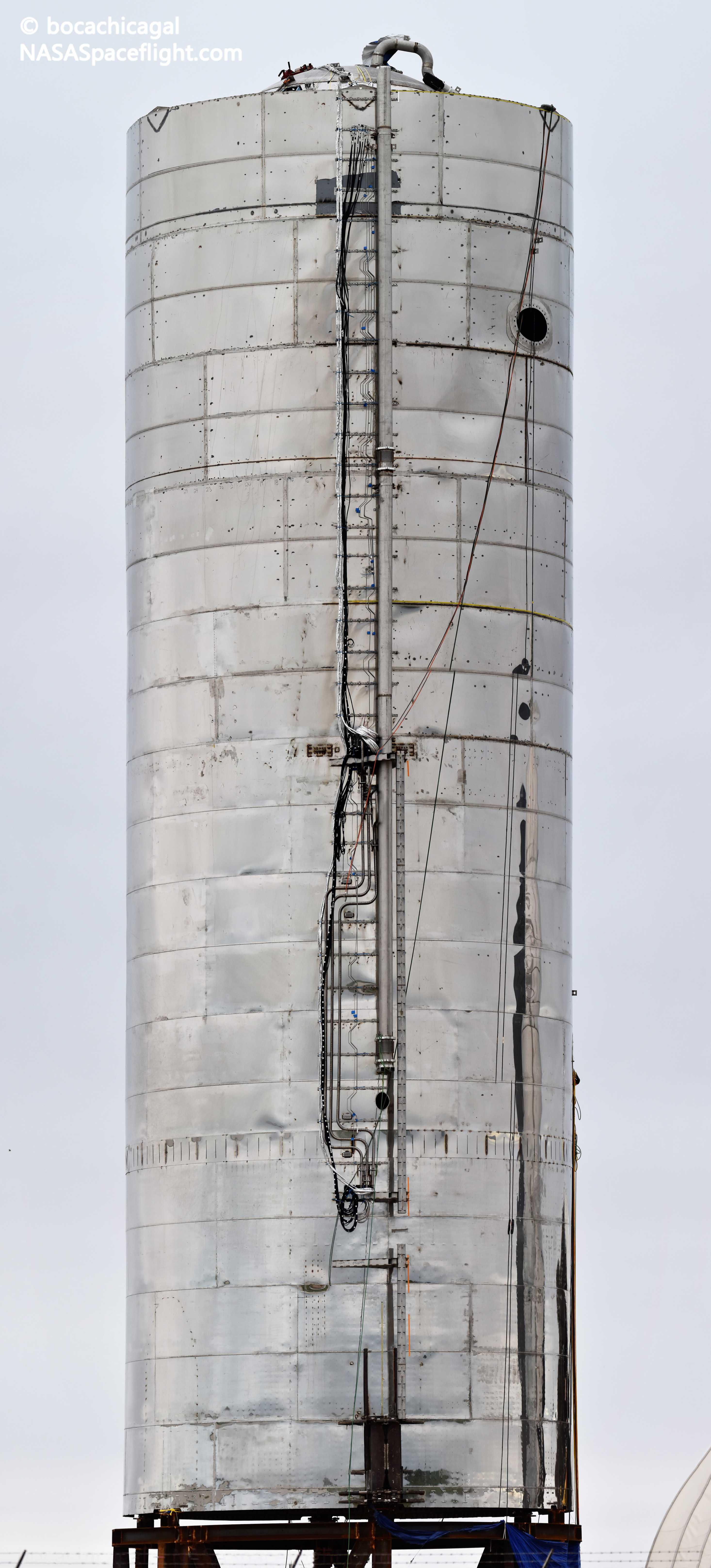
The sheer quantity and range of sizes of piping being installed on Starship Mk1 all but confirms that the rocket will be a high-fidelity prototype capable of testing a wide range of capabilities related to autogenous pressurization and Raptor engine ignition. The mirrored presence of three sets of smaller pipes on the vehicle’s raceway (essentially a utility corridor) is a strong sign that Raptor and Starship’s smaller header tanks and COPVs (located in Mk1’s nose section) are closely related.
Some of the excess hot gas produced by Raptor may be tapped to supply COPVs that can then be used to reignite the engines in-flight. More likely, the small pipes are more of a one-way feed line from Starship’s header tanks to its Raptor engines and – as Musk has indicated – the cryogenic liquid propellant in those header tanks will be gasified with electric heaters or gas generators.
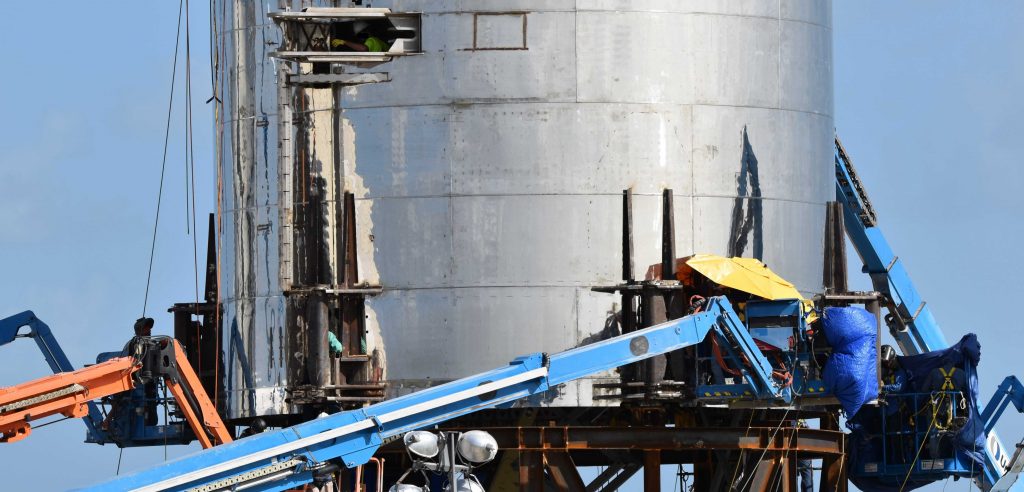
Starship gymnastics
Given all of the above, close followers were already readily aware of the fact that Starship Mk1 needed some significant work done before it would be ready for flight. On October 22nd, SpaceX Senior Director Gary Henry confirmed these suspicions, indicating that Starship Mk1’s 20 km (12 mi) flight test debut was now scheduled no earlier than two months from now (December 2019).
According to CEO Elon Musk and other SpaceX engineers, that 20 km flight debut is designed to prove that Starship’s radical new approach to flight and landing is viable. Musk has repeatedly described that Starship will in no way be an actual space plane and has stated that its ‘wings’ and ‘canards’ are not intended to be airfoils or wings. Instead, Starship will reenter Earth’s atmosphere, slow its horizontal velocity to near-zero, and proceed to free-fall straight down, using its fore and aft flaps to control its trajectory in the same way that skydivers use their body and limbs.
This bizarre approach will be capped off with an aggressive landing maneuver in which Starship will ignite its engines, wildly thrust-vector and swerve to cancel out the horizontal velocity imparted by that sideways ignition, and land vertically on Earth (or Mars). In theory, this strategy will radically reduce the amount of fuel Starship needs to land in atmospheres, but it’s far removed from anything SpaceX has attempted with Falcon 9 and Starship Mk1’s first flight will hopefully prove it to be a viable solution.
Check out Teslarati’s Marketplace! We offer Tesla accessories, including for the Tesla Cybertruck and Tesla Model 3.

Elon Musk
Elon Musk’s X will start using a Tesla-like software update strategy
The initiative seems designed to accelerate updates to the social media platform, while maintaining maximum transparency.

Elon Musk’s social media platform X will adopt a Tesla-esque approach to software updates for its algorithm.
The initiative seems designed to accelerate updates to the social media platform, while maintaining maximum transparency.
X’s updates to its updates
As per Musk in a post on X, the social media company will be making a new algorithm to determine what organic and advertising posts are recommended to users. These updates would then be repeated every four weeks.
“We will make the new 𝕏 algorithm, including all code used to determine what organic and advertising posts are recommended to users, open source in 7 days. This will be repeated every 4 weeks, with comprehensive developer notes, to help you understand what changed,” Musk wrote in his post.
The initiative somewhat mirrors Tesla’s over-the-air update model, where vehicle software is regularly refined and pushed to users with detailed release notes. This should allow users to better understand the details of X’s every update and foster a healthy feedback loop for the social media platform.
xAI and X
X, formerly Twitter, has been acquired by Elon Musk’s artificial intelligence startup, xAI last year. Since then, xAI has seen a rapid rise in valuation. Following the company’s the company’s upsized $20 billion Series E funding round, estimates now suggest that xAI is worth tens about $230 to $235 billion. That’s several times larger than Tesla when Elon Musk received his controversial 2018 CEO Performance Award.
As per xAI, the Series E funding round attracted a diverse group of investors, including Valor Equity Partners, Stepstone Group, Fidelity Management & Research Company, Qatar Investment Authority, MGX, and Baron Capital Group, among others. Strategic partners NVIDIA and Cisco Investments also continued support for building the world’s largest GPU clusters.
News
Tesla FSD Supervised wins MotorTrend’s Best Driver Assistance Award
The decision marks a notable reversal for the publication from prior years, with judges citing major real-world improvements that pushed Tesla’s latest FSD software ahead of every competing ADAS system.

Tesla’s Full Self-Driving (Supervised) system has been named the best driver-assistance technology on the market, earning top honors at the 2026 MotorTrend Best Tech Awards.
The decision marks a notable reversal for the publication from prior years, with judges citing major real-world improvements that pushed Tesla’s latest FSD software ahead of every competing ADAS system. And it wasn’t even close.
MotorTrend reverses course
MotorTrend awarded Tesla FSD (Supervised) its 2026 Best Tech Driver Assistance title after extensive testing of the latest v14 software. The publication acknowledged that it had previously criticized earlier versions of FSD for erratic behavior and near-miss incidents, ultimately favoring rivals such as GM’s Super Cruise in earlier evaluations.
According to MotorTrend, the newest iteration of FSD resolved many of those shortcomings. Testers said v14 showed far smoother behavior in complex urban scenarios, including unprotected left turns, traffic circles, emergency vehicles, and dense city streets. While the system still requires constant driver supervision, judges concluded that no other advanced driver-assistance system currently matches its breadth of capability.
Unlike rival systems that rely on combinations of cameras, radar, lidar, and mapped highways, Tesla’s FSD operates using a camera-only approach and is capable of driving on city streets, rural roads, and freeways. MotorTrend stated that pure utility, the ability to handle nearly all road types, ultimately separated FSD from competitors like Ford BlueCruise, GM Super Cruise, and BMW’s Highway Assistant.
High cost and high capability
MotorTrend also addressed FSD’s pricing, which remains significantly higher than rival systems. Tesla currently charges $8,000 for a one-time purchase or $99 per month for a subscription, compared with far lower upfront and subscription costs from other automakers. The publication noted that the premium is justified given FSD’s unmatched scope and continuous software evolution.
Safety remained a central focus of the evaluation. While testers reported collision-free operation over thousands of miles, they noted ongoing concerns around FSD’s configurable driving modes, including options that allow aggressive driving and speeds beyond posted limits. MotorTrend emphasized that, like all Level 2 systems, FSD still depends on a fully attentive human driver at all times.
Despite those caveats, the publication concluded that Tesla’s rapid software progress fundamentally reshaped the competitive landscape. For drivers seeking the most capable hands-on driver-assistance system available today, MotorTrend concluded Tesla FSD (Supervised) now stands alone at the top.
News
Elon Musk’s Grokipedia surges to 5.6M articles, almost 79% of English Wikipedia
The explosive growth marks a major milestone for the AI-powered online encyclopedia, which was launched by Elon Musk’s xAI just months ago.

Elon Musk’s Grokipedia has grown to an impressive 5,615,201 articles as of today, closing in on 79% of the English Wikipedia’s current total of 7,119,376 articles.
The explosive growth marks a major milestone for the AI-powered online encyclopedia, which was launched by Elon Musk’s xAI just months ago. Needless to say, it would only be a matter of time before Grokipedia exceeds English Wikipedia in sheer volume.
Grokipedia’s rapid growth
xAI’s vision for Grokipedia emphasizes neutrality, while Grok’s reasoning capabilities allow for fast drafting and fact-checking. When Elon Musk announced the initiative in late September 2025, he noted that Grokipedia would be an improvement to Wikipedia because it would be designed to avoid bias.
At the time, Musk noted that Grokipedia “is a necessary step towards the xAI goal of understanding the Universe.”
Grokipedia was launched in late October, and while xAI was careful to list it only as Version 0.1 at the time, the online encyclopedia immediately earned praise. Wikipedia co-founder Larry Sanger highlighted the project’s innovative approach, noting how it leverages AI to fill knowledge gaps and enable rapid updates. Netizens also observed how Grokipedia tends to present articles in a more objective manner compared to Wikipedia, which is edited by humans.
Elon Musk’s ambitious plans
With 5,615,201 total articles, Grokipedia has now grown to almost 79% of English Wikipedia’s article base. This is incredibly quick, though Grokipedia remains text-only for now. xAI, for its part, has now updated the online encyclopedia’s iteration to v0.2.
Elon Musk has shared bold ideas for Grokipedia, including sending a record of the entire knowledge base to space as part of xAI’s mission to preserve and expand human understanding. At some point, Musk stated that Grokipedia will be renamed to Encyclopedia Galactica, and it will be sent to the cosmos.
“When Grokipedia is good enough (long way to go), we will change the name to Encyclopedia Galactica. It will be an open source distillation of all knowledge, including audio, images and video. Join xAI to help build the sci-fi version of the Library of Alexandria!” Musk wrote, adding in a later post that “Copies will be etched in stone and sent to the Moon, Mars and beyond. This time, it will not be lost.”








